 |
 |
 |
| |
Offering Drug Injectors PrEP While ID Inpatients Not Successful
|
| |
| |
IDWeek, September 29-October 3, 2021
Mark Mascolini
Although 60% of people who inject drugs admitted to an infectious disease ward wanted to know more about preexposure prophylaxis (PrEP) for HIV, only 7% left the hospital with a PrEP prescription in a small Boston study [1]. About 4 in 5 drug injectors denied they had a risk for HIV infection, and most clinicians cited concerns about follow-up and adherence in explaining hesitance to prescribe PrEP.
Researchers at Boston's Tufts Medical Center noted that people who inject drugs accounted for 1 in 10 new HIV diagnoses in the United States in 2018-and in that year they accounted for 12.5% of all US deaths from HIV. The United States Preventive Services Task Force recommends PrEP for people at high risk for HIV infection, including people who inject drugs and (1) share drug injection equipment or (2) risk acquiring HIV sexually [2]. The Centers for Disease Control and Prevention (CDC) estimates that 18.5% of all people who inject drugs in the United States are at risk for HIV infection and therefore eligible for PrEP [3].
The Tufts clinicians reminded colleagues that PrEP uptake remains low among all risk populations in the United States. They suggested that many drug injectors may not consider PrEP because of their low access to healthcare. They hypothesized that hospital admissions may represent a missed opportunity to offer and prescribe PrEP to drug injectors, who often get admitted for infectious complications of drug use.
The researchers conducted this study to assess baseline PrEP offerings and uptake among drug injectors admitted to Tufts Medical Center. They questioned Infectious Disease Ward Service attending physicians about PrEP prescription practices and perceived barriers with people who inject drugs. The researchers screened the infectious disease ward daily for all drug injectors negative for HIV infection. They approached identified individuals to counsel them about PrEP and to suggest a PrEP prescription for accepting inpatients.
Among 16 identified TDF/FTC prescriptions written for infectious disease inpatients from October 2019 through August 2020, none were for PrEP for people who inject drugs. The researchers surveyed 8 infectious disease ward clinicians, who estimated that they see 4 people who inject drugs during every 2-week service block. Five of the 8 clinicians said they cared for drug injectors who seemed reasonable candidates for PrEP and they claimed they offered PrEP to these people. Three clinicians said they did not offer PrEP to any people who inject drugs. The most frequently cited barrier to PrEP noted by clinicians (64%) was uncertainty over follow-up and PrEP adherence among people who inject drugs. The second most frequent barrier (18%) was short length of hospital stay for these inpatients.
The researchers approached 30 HIV-negative people who inject drugs during their hospital stays, which averaged 10 days (range 1 to 45). Fourteen of these 30 people (46.7%) had heard of PrEP, and 18 (60%) agreed to PrEP counseling and education. Those who agreed had an in-depth interview and counseling and received a PrEP information packet.
Four inpatients (22.2% of 18 and 13.3% of 30) agreed to start PrEP, and 2 of them (11.1% of 18 and 6.7% of 30) ultimately got a PrEP prescription before they left the hospital (2 physicians thought it safer to start PrEP in outpatients). Only 1 of the 2 people prescribed PrEP in the hospital attended follow-up appointments.
These 30 inpatients saw several challenges to starting PrEP. A large majority (82%) perceived challenges that could be grouped as a perception of little or no risk for HIV infection: 41% denied sharing drug equipment; 22% stated commitment to future drug-injecting abstinence; 13% denied active drug use; and 6% felt their contacts had a low risk for HIV infection. Another 9% did not want a PrEP drug that required daily dosing, 6% had concerns over possible side effects, and 3% had concerns about stigma.
Because of the low PrEP uptake by this inpatient group of drug injectors-and hesitation voiced by their clinicians-the researchers concluded that "the inpatient setting may not be ideal" for encouraging PrEP, "or this method of offering PrEP may not be effective for successful initiation at our institution." But they suggested that PrEP counseling may still be useful for inpatients like these, 60% of whom voiced interest in learning more about and possibly starting PrEP. They added that PrEP interest elicited during an inpatient encounter could help identify people who can be referred to outpatient PrEP services.
References
1. Marryshow TA, Caro J. Pilot study on offering HIV pre-exposure prophylaxis (PrEP) to people who inject drugs (PWID) in the inpatient setting. IDWeek, September 29-October 3, 2021. Abstract 50.
2. US Preventive Services Task Force. Prevention of Human Immunodeficiency Virus (HIV) Infection: Preexposure Prophylaxis. June 11, 2019.
https://www.uspreventiveservicestaskforce.org/uspstf/document/RecommendationStatementFinal/prevention-of-human-immunodeficiency-virus-hiv-infection-pre-exposure-prophylaxis
3. Smith DK, Van Handel M, Wolitski RJ, et al. Estimated percentages and numbers of adults with indications for preexposure prophylaxis to prevent HIV acquisition--United States, 2015. MMWR Morb Mortal Wkly Rep. 2015 Nov 27;64(46):1291-5. doi: 10.15585/mmwr.mm6446a4. https://pubmed.ncbi.nlm.nih.gov/26606148/
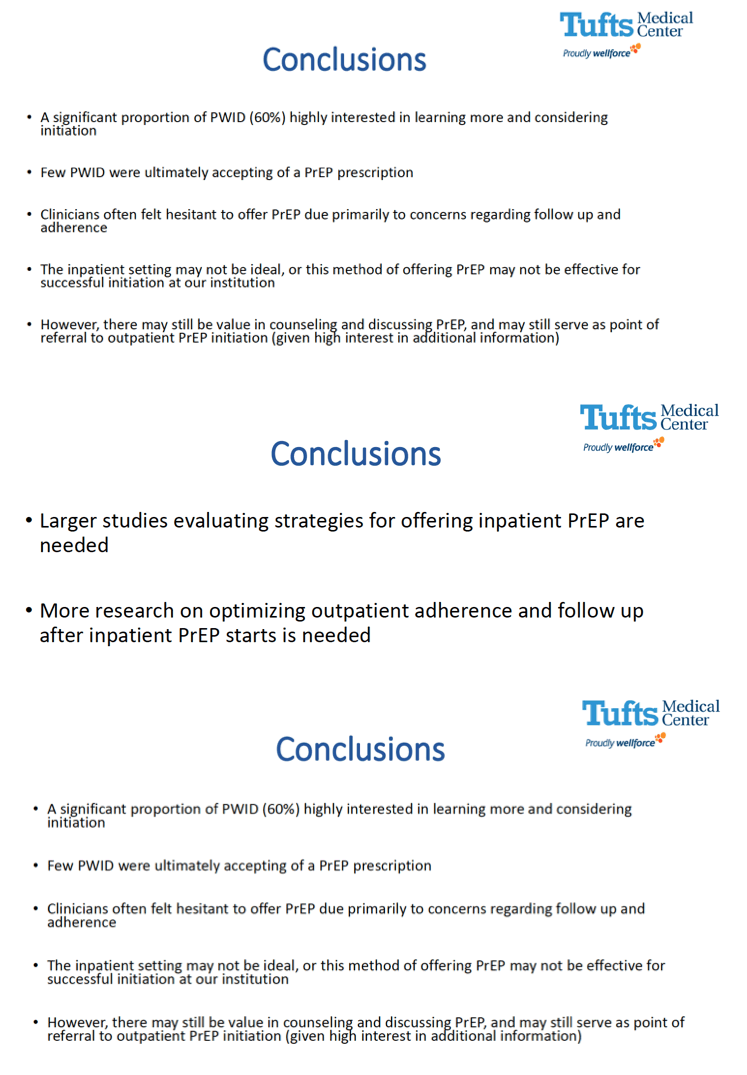
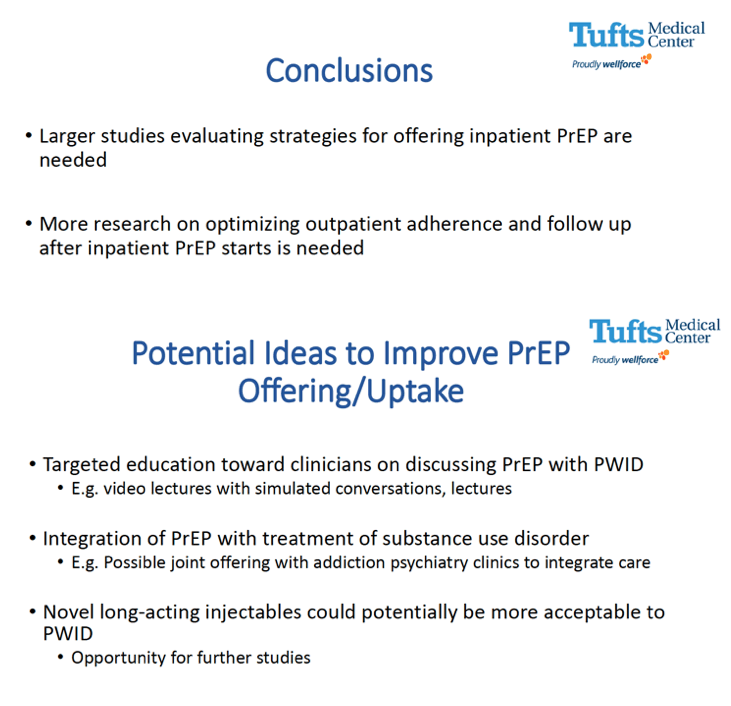
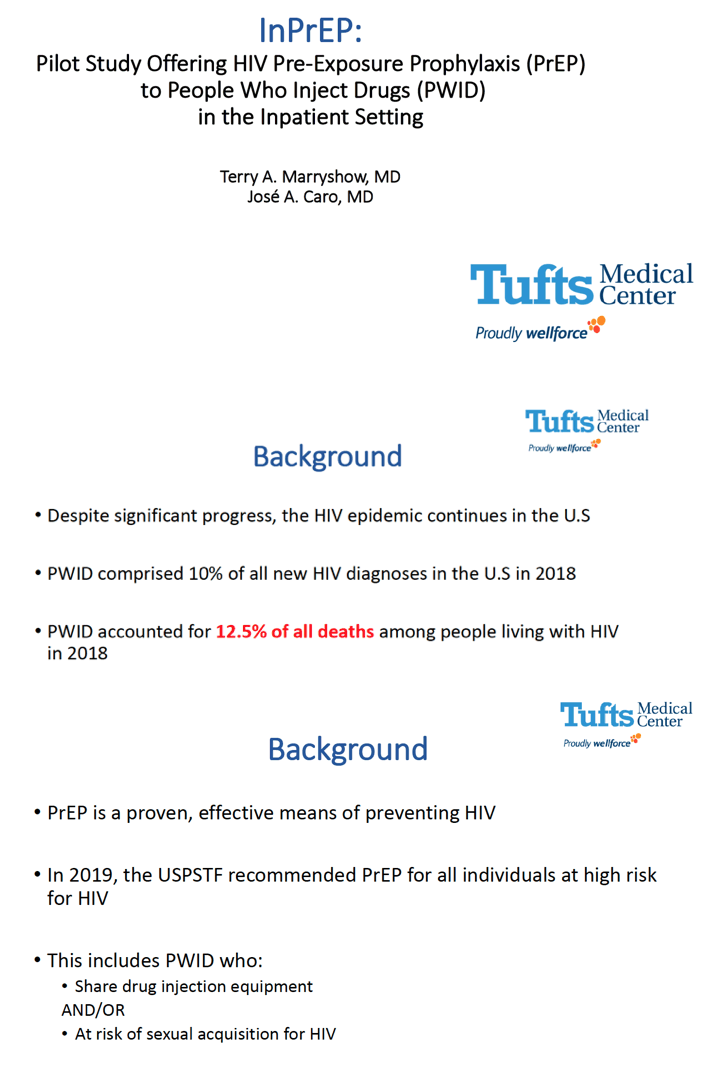
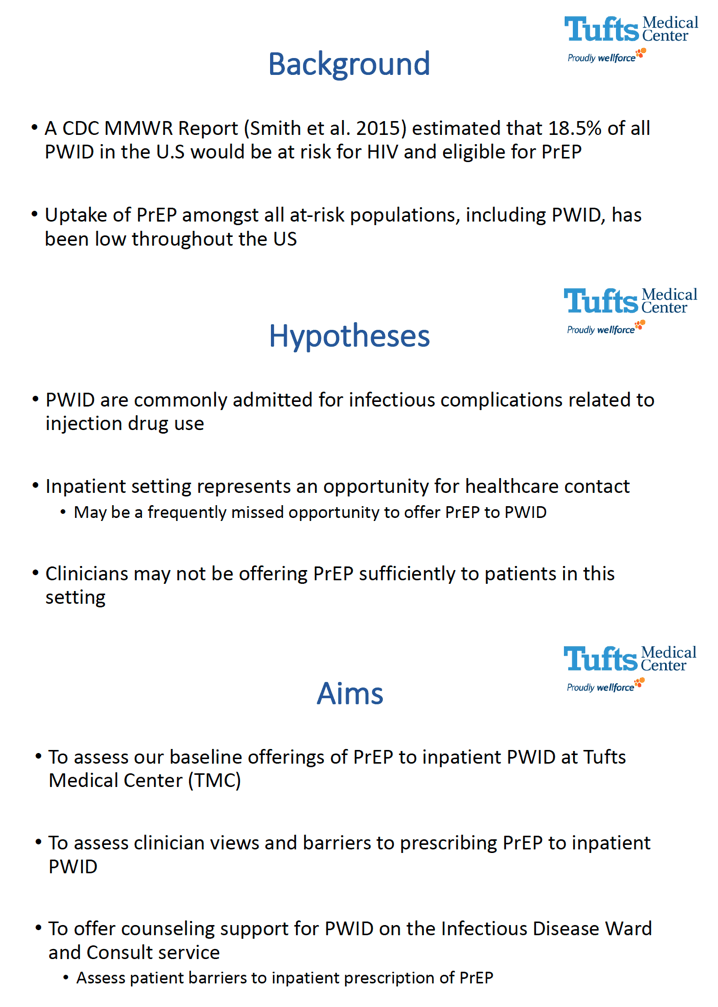
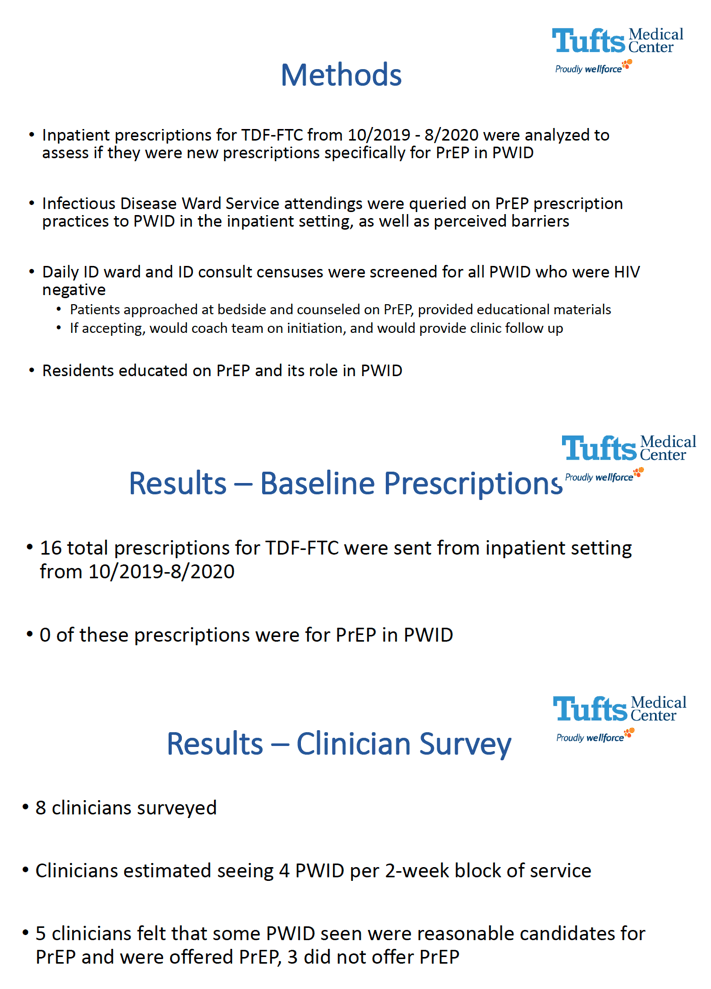
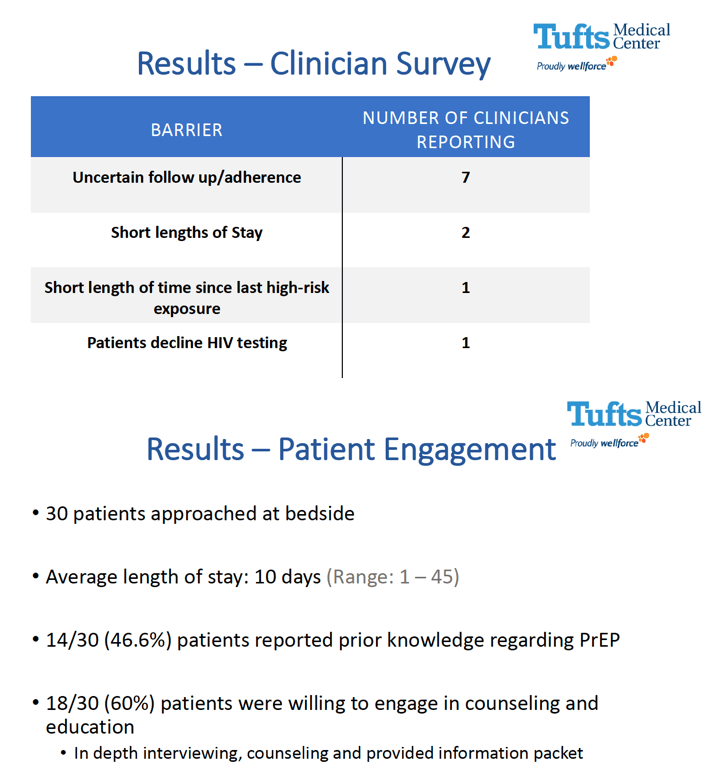
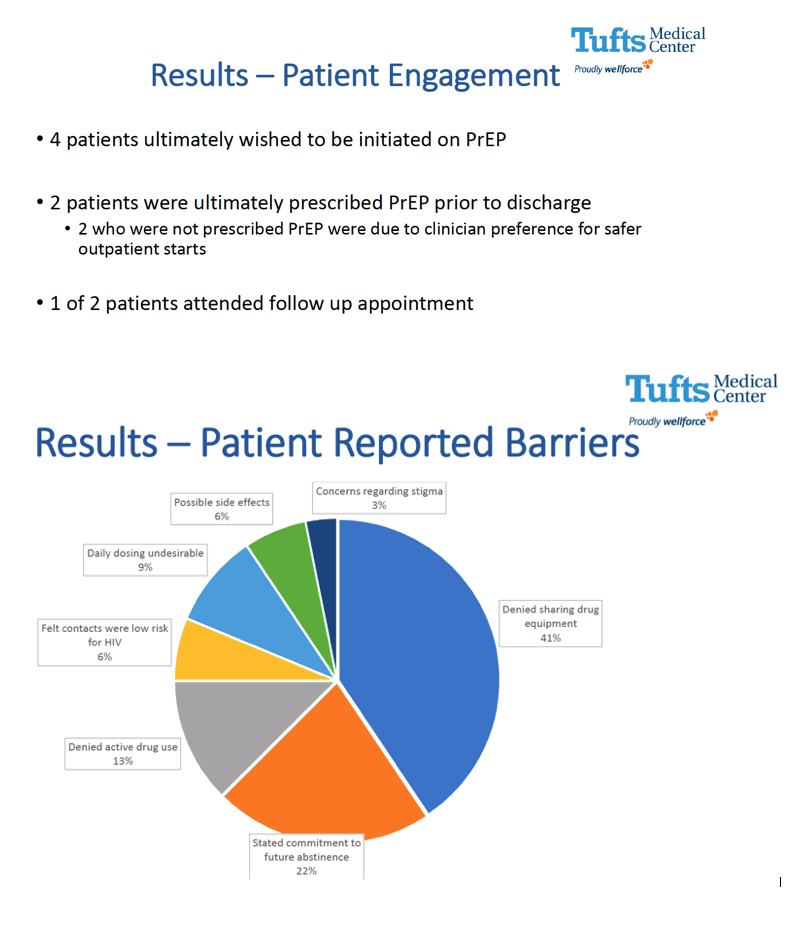
|
| |
|
 |
 |
|
|